
Proyecto enfocado en la creación de un Agente en IA para la Defensa y Seguridad del país. Este Agente IA tendrá la siguientes funciones:\n- Aplicar una estrategia de acción en seguridad y defensa del país ( pandemia, ataques terroristas, guerras, ciberataques. amenazas) basada en toma de decisiones.\n- Formación y Creación de grupos de trabajo nacionales e internaciales cuya misión es trasladar el mensaje indicado por el Agente IA a los organismos gubernamentales que competan de los distintos países afectados.\n- Establecer reglas para la Automatización de tareas \nEntre otras funciones

AaltoAI hackathon project for an data analysis agent

Our project is an AI-powered field service assistant designed to support elevator technicians across the full maintenance cycle. It integrates ticket data, service records, manuals, and telemetry signals to provide real-time troubleshooting recommendations, detects anomalous sensor data, offers voice-guided repair support, and generates structured incident reports. Key features include a multi-agent architecture and knowledge-grounded LLM responses. It enables end-to-end workflow automation — from ticket pick-up to final report generation to significantly improving efficiency, consistency, and technician experience on-site.\nGroup member:\nRuikang Tao, Ruifeng Nie, Zimeng Zhang, Yunxuan Liu, Tao Yu

LLM Aggregators: Samu Toljamo, Olli Glorioso, Viljami Hakkarainen and David Ramos\n\nOur Three-Step Approach:\n\nStep 1: Group Similar Innovations using embeddings\n\nGenerate semantic embeddings from innovation descriptions and titles\nUse similarity thresholds to identify potential duplicate clusters\nScale analysis across thousands of innovation records\n\nStep 2: Validate Groups with LLM\n\nAzure OpenAI reviews each cluster for false positives\nRemoves incorrectly grouped innovations with detailed reasoning\nEnsures high precision while maintaining recall\nStep 3: Aggregate Results with LLM\n\nLLM combines information from multiple sources about the same innovation\nCreates unified innovation profiles preserving all source details\nMaintains full traceability while consolidating descriptions\n\nYou will find some visualizations from the project link and in the repo the most interesting file is the main.ipynb file.\n\nVideo: https://drive.google.com/drive/folders/1ZdlPXga2n17u7B9Z9KeLhf-8IOcioF5p?usp=sharing

KHWARIZMI: From Thought to Vision. Our system transforms your natural language prompts into comprehensive reports with data visualizations, SQL queries, and textual explanations - turning your analytical thoughts into visual insights.
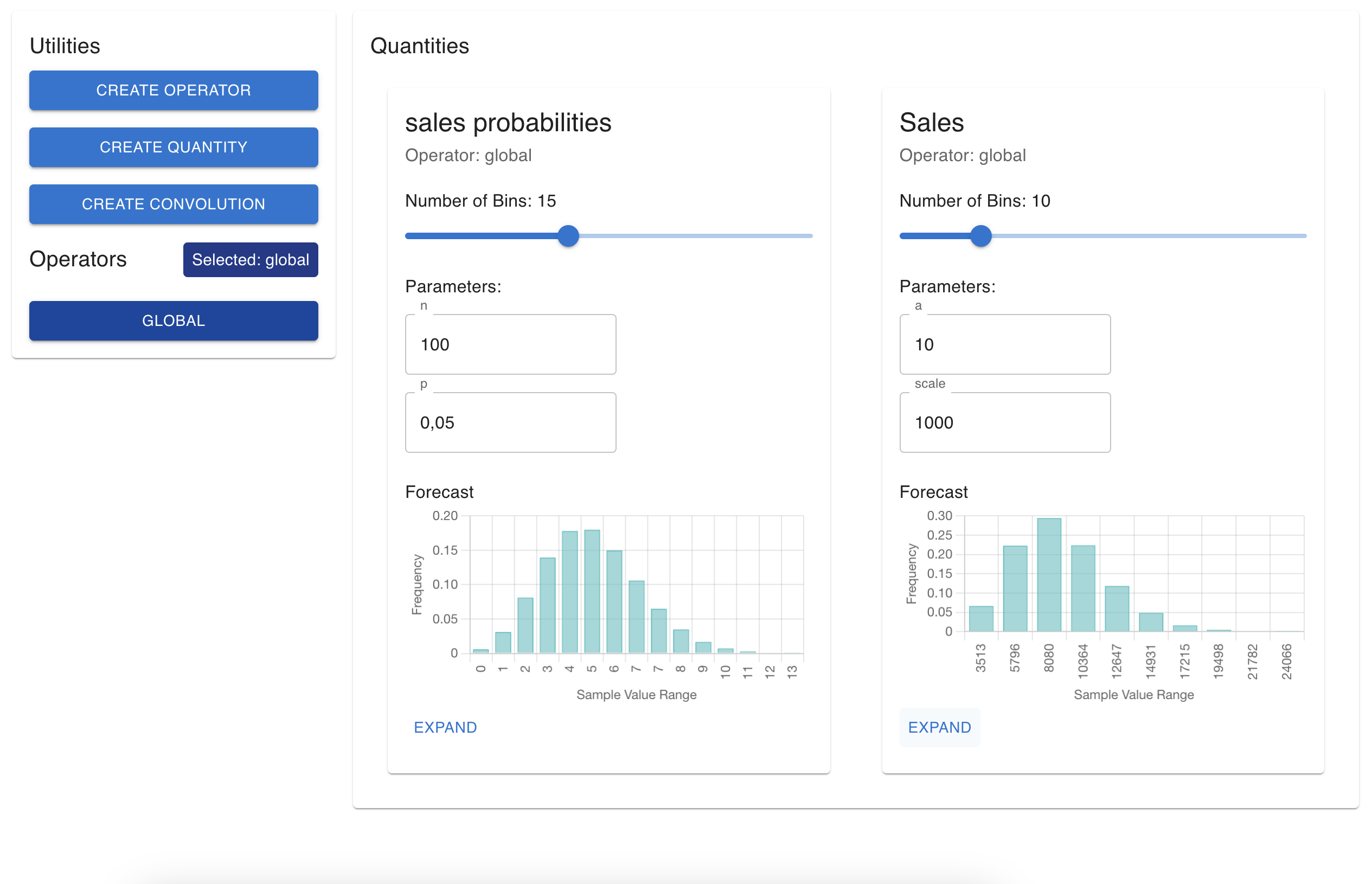
This project lets the user model their expected sales outcomes through convolutions of probability distributions and quantities.
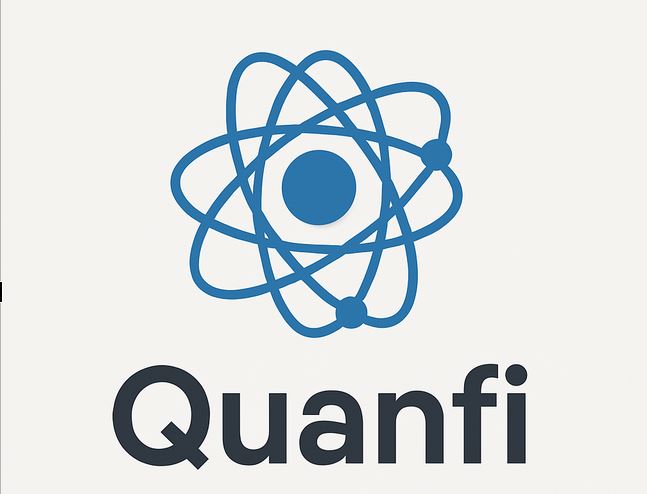
Quantum optimization algorithm with AI for Kone Elevators for fast repair.\n\nUse the Powerpoint presentation in the GitHub (Tech presentation final.pdf) for listening the video provided in Project Link.

Oxygen-related anionic redox reaction in sodium-ion batteries is universally confronted with several roadblocks such as insufficient reversibility and poor understanding on the functioning mechanisms

Notebook with my (Duarte) work at the Hack N Chill for the Spot Pricing challenge. Stream of thought data analysis treatment and modelling as I re-learned some ML and tried learning some more

Authors:\nNikita Masaliuk, Evgenii Korsukov, Maxim Afteniy\n\nMain description: \nJypiter lab ai analyst that gets a request sentence and converts it into a complete analysis. Run the code on your laptop and interact with the framework via comand line or telegram.\n\nTelegram feature:\nGreat ideas about work often strike when you're off the clock. With our bot, you can quickly pull out your phone and ask any question about your data — no time lost. Voice message or just text - up to you.\n\nUse tg bot: @telewhisp_bot
.png)
This project addresses the challenge of identifying and consolidating innovation disclosures from VTT's collaboration partnerships.\nTeam name: Agent Warrior \nTeam members: Yang Jun, Gao Hao, Chen Yuxin, Li Lijie, Li Changrong

A React Native app used to provide content creators with the tools they need to become viral and engaging, with many tools tailored to creators such as a news feed that includes many things for creators to make videos about, there is also a personal AI clickbait finder, as well as a content analyzation tool that returns feedback and a engagement score. Teammate: Oliver Viitaniemi https://youtu.be/eWJedjwgpo4?si=4Mbi8F7bySETxcPZ

Link to the video: https://youtu.be/3i2aok9xppA.\nTeam members: Dat Doan, Haitham Al-Shami, Hari Prasanth S.M., Muhammad Ahmad, Rohail Malik.\n\nThe project is an app for Microsoft's challenge, focusing on easing elevator technician work. We use multiagents in langGraph with a neo4j data base. We included the ability to transcribe speech-to-text and a camera. The camera uses openCV. The whole project is built in a docker container and can be ran quite easily by allowing it to build.
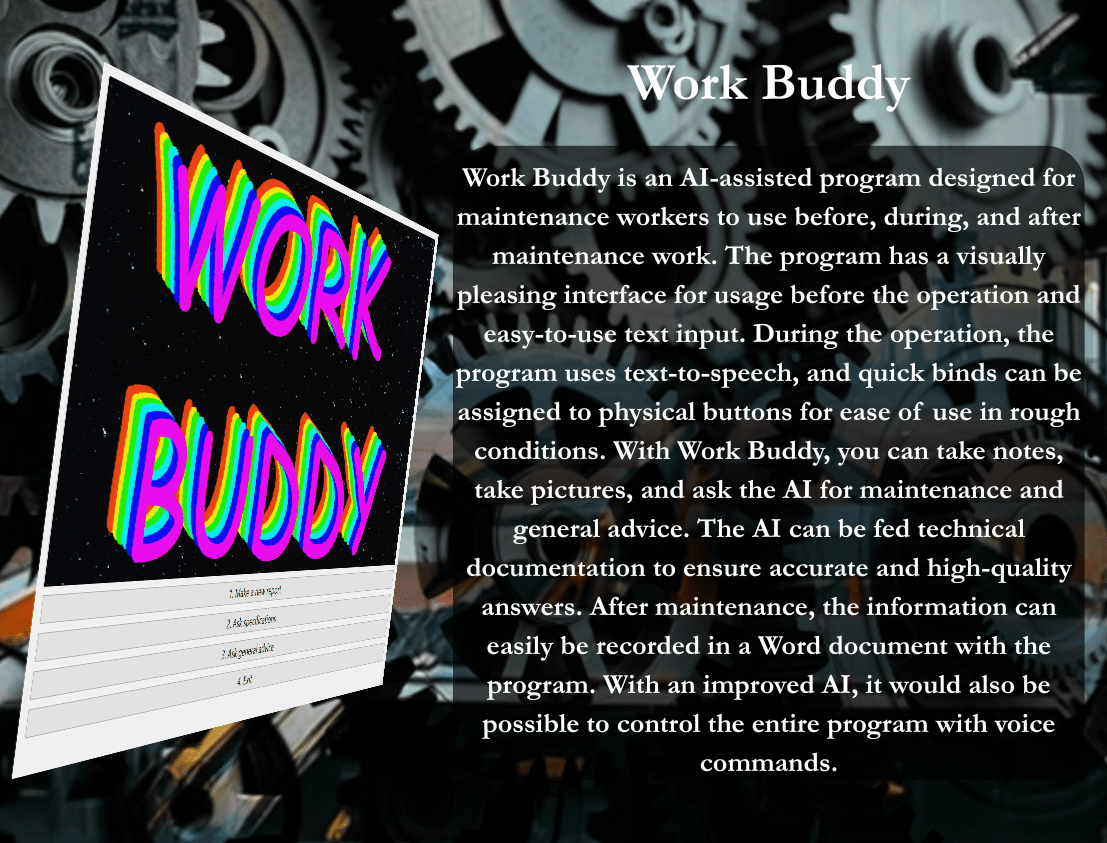
Filling out reports in the field during a service operation can be time consuming and impractical. To solve this problem, we developed a program with which you can fill these out using voice or text commands. The user can also ask for advice from the AI during the operation. Short demo video available through project link. Project made by: Pessi Fabritius, Justus Lehtola and Rasmus Mäkinen

LLM based SQL database searcher and visualizer. For Norrin challenge.\n\nTeam members:\nMikael Gustafsson\nHenry Kivijärvi\nMaj Nyholm\nJosetta Rautapää\nJade Reinilä

Defect-Vision is an AI-powered image analysis tool designed to automatically detect and classify defects in industrial products. By utilizing deep learning techniques and anomaly detection algorithms, the system helps ensure quality control by identifying imperfections such as cracks, scratches, or missing components. Key features include real-time image processing, anomaly scoring, and a user-friendly interface for reviewing inspection results. The project aims to improve manufacturing efficiency, reduce manual inspection efforts, and enhance product reliability.
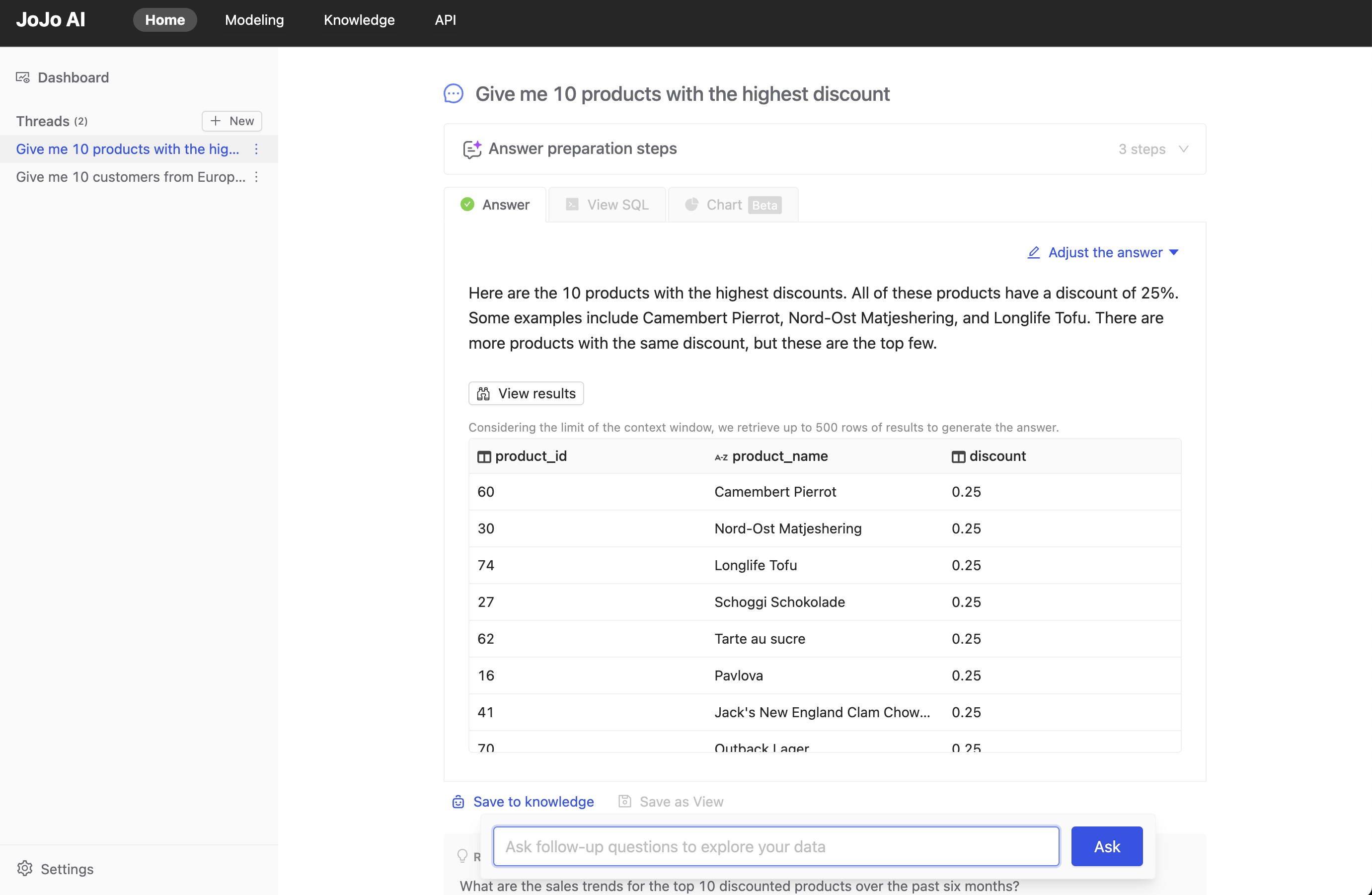
The project presents AI platform that can understand natural language to generate SQL queries and charts. The project is a result of a tedious research of available solutions that serve this purpose and is based on WrenAI platform.\n\nKey features include:\n- Text-to-SQL\n- Text-to-Charts\n- AI-generated concise summary and explanation of results\n- User-friendly UI that serves the use cases defined by Norrin\n\nTeam members:\n- Mehdi Moshtaghi\n- Ruslan Potekhin\n\nVideo: https://www.youtube.com/watch?v=xOMneGifdaA
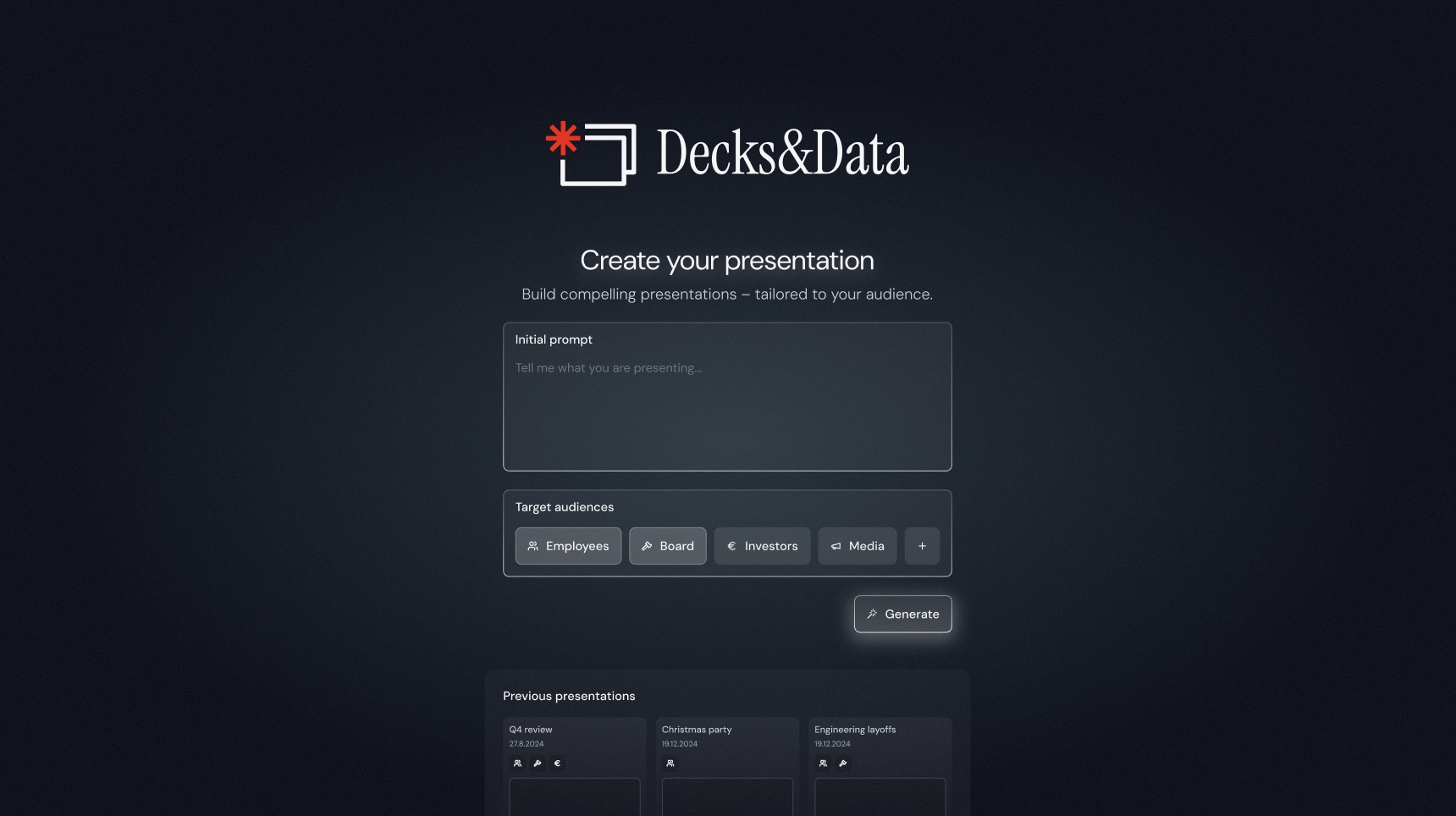
Decks&Data is a generative slide deck tool powered by a multi-agent system that transforms structured data into customized, audience-specific presentations. Consultants, founders and executives present insights to various audiences like employees, shareholders, investors and the media. Even while working with familiar data, time is lost finding the right numbers and figuring out how to present them, which shifts the focus away from what actually matters: the message. Built on an ADK-powered architecture, the system uses a complex orchestration workflow to coordinate four specialized agents: an interpreter, a deck architect, a data analyst and an art director. Through A2A communication, the agents interpret natural language prompts, query multi-table datasets, analyze results, and generate slides with tailored charts and text. The result is clear, persuasive storytelling adapted to the goals, values, and knowledge level of each audience. The system demonstrates agentic reasoning, natural language understanding, dynamic A2A coordination, scalable orchestration, and audience-aware insight generation. Team Complonkers: Aino Hukkanen, Mael Chauvet, Anton Shumilin, Mikko Suhonen, Ilia Zalesskii.

Ducker is an AI Data Analyst solution for people who are lazy to write their own sql queries, also it is a solution to the hackathon challenge by SmartBI. It uses react, next.js, shadcn, tailwind CSS, python, fastAPI, duckdb, openai and much more
%20(1)%20(1).png)
GodEye is an intelligent multi-channel assistant that combines natural language understanding, data analytics, and automation to serve users via Telegram, Slack, and Web App.\n\n🧠 Ask in plain English — get real insights\n🔍 Auto-generated SQL & visualizations\n📊 Interactive charts (web) & image exports (Telegram)\n🧾 Insightful summaries \n🔌 Ready for databases, APIs, and customer support flows \n\nTeammates:\nIvan Semeniuk\nZachary Burda\nMateusz Sopyla

DisPatcher supports maintenance workers from start to finish. It provides job details and checklists upfront, answers questions on site using a vector database of embedded manuals, and simplifies reporting by auto-generating post-job summaries from audio transcriptions and logged data.\n\nTeammates : Matús, Nazaal, Shahida, Robert, Nahl\n\nVideo link:\n https://www.youtube.com/watch?v=gfjzBqDtbJ0
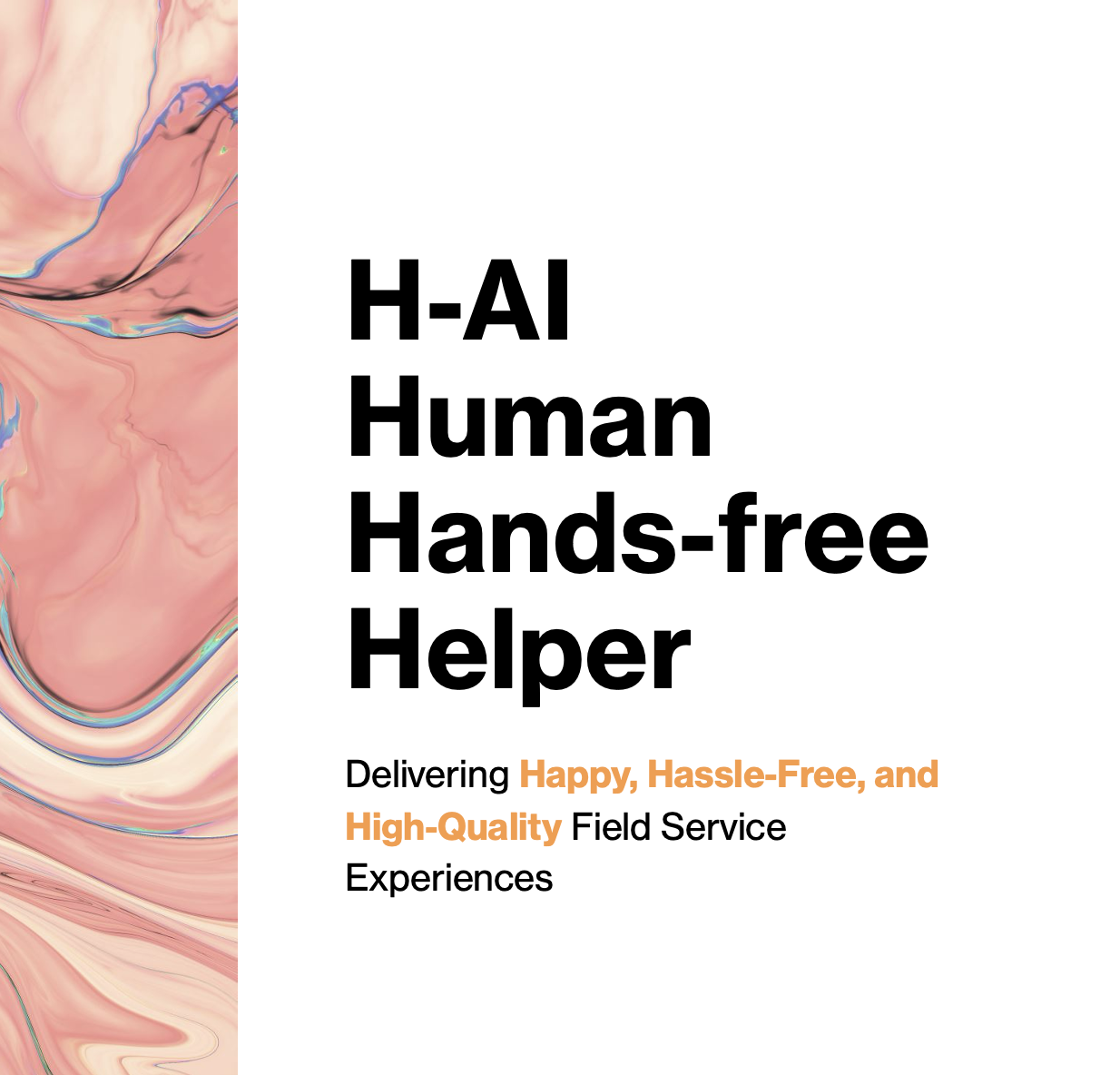
H-AI, the Human Hands-Free Helper, is an AI-powered assistant that captures and analyzes everything technicians do in the field – through video, voice, and text. \v\v\n\nIt transforms rugged, hands-on work environments into streamlined, error-free reporting processes.\v\v\n\nBy eliminating manual data entry and leveraging AI to auto-generate post-operation logs, we ensure technicians focus on what matters most: safe, high-quality repairs. \v\v\n\nThe result? Happy, hassle-free, and high-quality field service experiences – every time.\v\n\nTeammates:\nTianran Li, Junyuan Fang, Rosanna Hu, Haoyu Wei and Yibo Zhang.\n\nDemo link:\nhttps://youtu.be/VBIQ4MedSxo
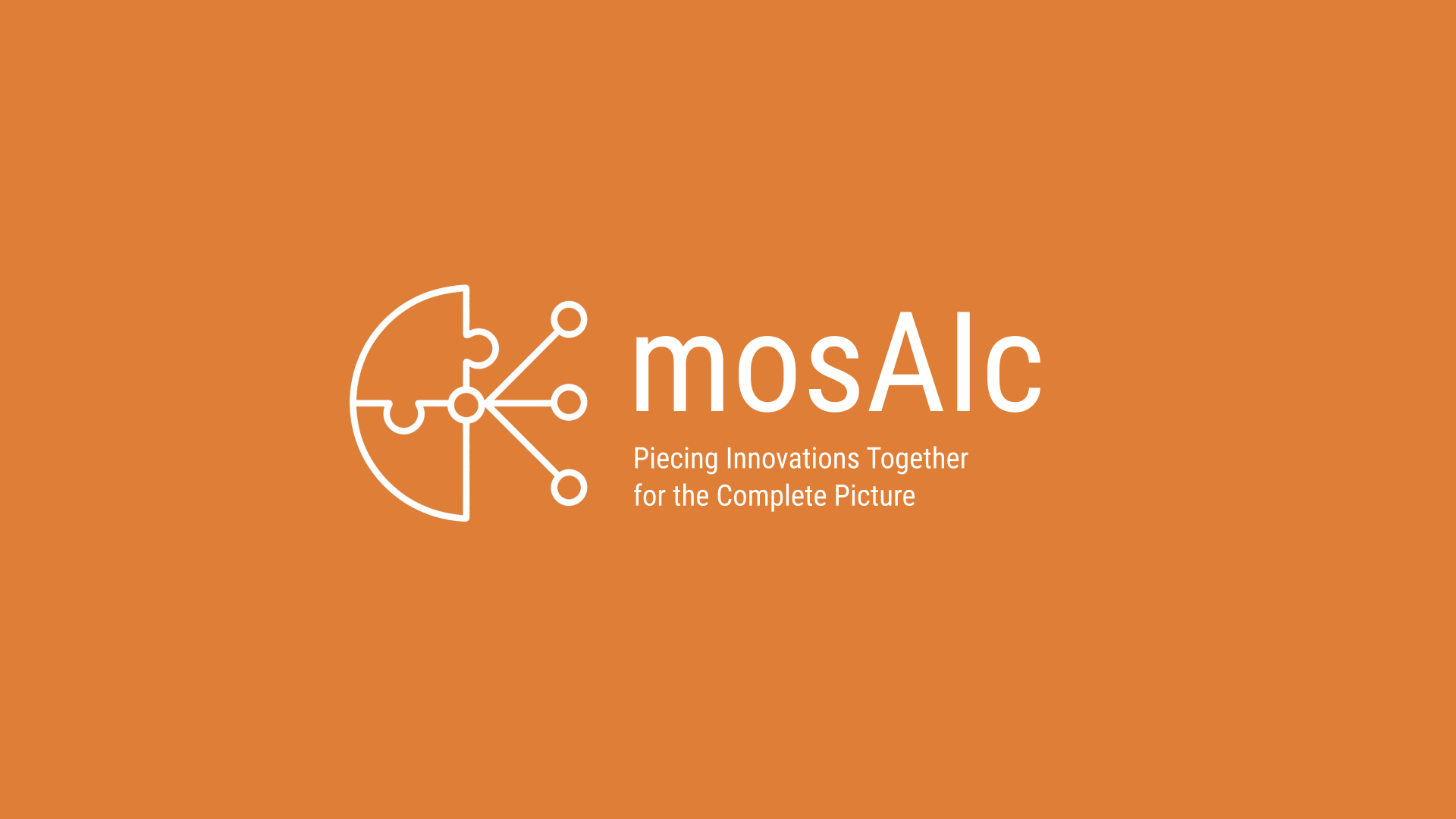
AI-powered pipeline that transforms VTT's fragmented innovation data into a clean, canonical knowledge graph using FAISS semantic search, GPT-4.1-mini, and intelligent graph curation.\n\nTeam:Artemii Ustiukhin, Ekaterina Ustiukhina, Carl Kugblenu, Mikhail Shavliuk, Daria Kriukova

Names: Cosmo Paul, Ahmed Tolbh, Duc Le, Udayanto Dwi Atmojo, Yun Wei.\n\nService technicians might have trouble recalling critical information for their job at hand (elevator repair, electrician, etc.). We created a mobile app that supports technicians by interpreting voice and video input and delivers step by step instructions based on custom company information for the problem at hand. Saves time, increases productivity, and can be used for data gathering on the job (video, voice, logs).\n\nVideo link: https://drive.google.com/file/d/1ap5kJhfan1SUc866bwmwIsuDbaar2-qf/view?usp=sharing
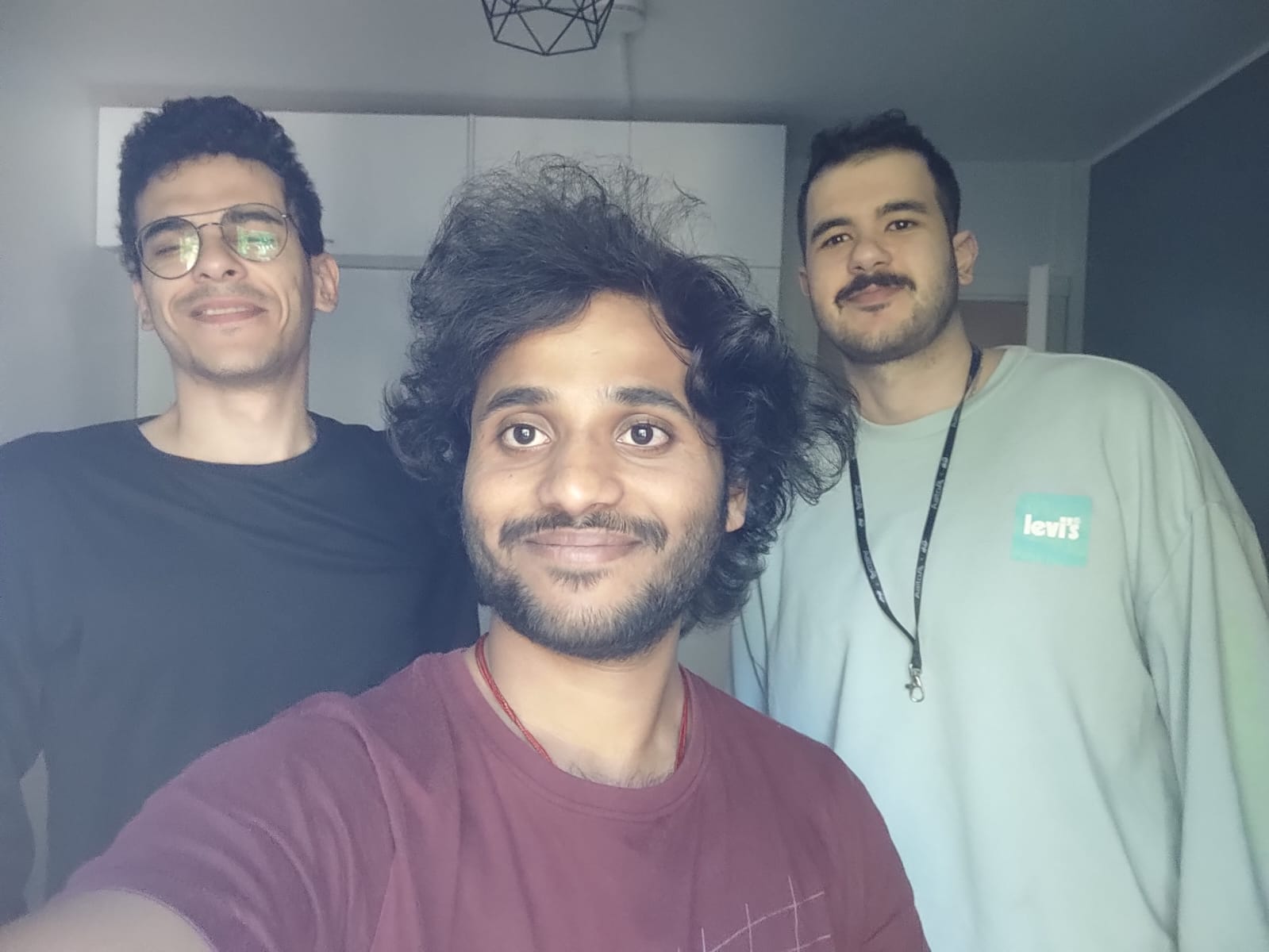
Pranish Kumar Munnangi,\nAbdelaziz Ibrahim,\nUzay Yildiztaskan,\nVik Kopplinger
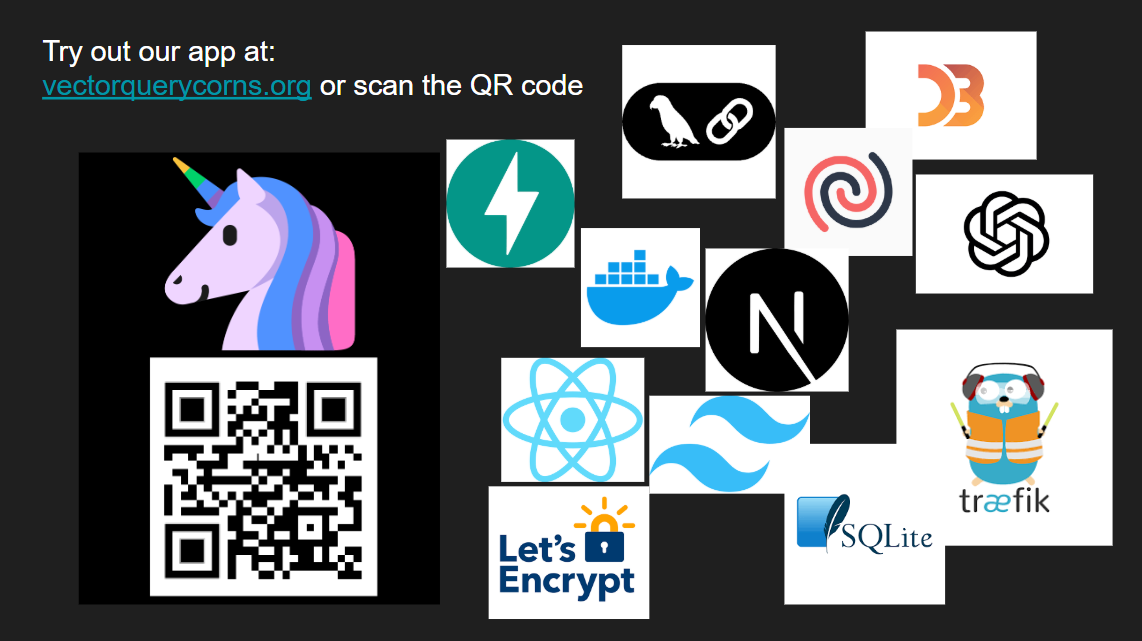
We created a MCP (Model Context Protocol) based service that uses OpenAI and LangChain agent framework to query interesting data for the user. The agent is able to call tools and resources to figure out what response the user wants. Then if the user requests or the AI decides to make a chart we visualize it using D3.js otherwise it is simply presented as text in our frontend. We are hosting the service publicly so anyone can try it out (while credits last) at vectorquerycorns.org.\n###############################################\nHere are some cool points of our solution:\n-It understands natural language\n-It can generate complex SQL queries based on the users request\n-It can transform, join and filter the tables of the database to produce accurate responses\n-It can perform complex deduction based on the data in the database and give suggestions to the user if what they are asking is unclear.\n-It can create pie and bar charts when applicable\n-It provides clear answers and explanations to the questions\n-It was designed with modularity in mind so more tools are easily added and more databases and other sources of information can easily be added without much configuration\n-We host it ourselves, but it can be easily run locally with npm commands or docker\n###################################################\nOur Tech stack:\nBackend: Python, FastAPI, SQL, MCP\nHosting: CloudFlare, DataCrunch, Traefik, Let’s Encrypt, Docker\nFrontend: Next.js, React, tailwind\nVisualization: D3.js\nLLM: OpenAI\nAgent Framework: LangChain\n####################################################\nExample complex queries\n1. Give me a diagram of the 5 most traded products during the first quarter of 1997 and tell how much money was used to trade each product. Give me the amount of money in your answer.\n2. Could you make a pie chart that shows the percentage of total revenue generated per product category and give me the percentages in your answer.\n3. Which 5 customers had the largest drop in spending between the first half of 1997 compared to the second half of 1997. Present it as a bar chart.\n\n(ps. database only has data from 1996 to 1998)\n#####################################################\nHere is the team behind this project:\nSamuel Schmidt, Juha Ylikoski, Vesa Haaparanta

SweatAI is an intelligent administration web application designed for fitness studios, gyms, and wellness centers that aim to work smarter—not harder. This platform seamlessly integrates AI agents into every aspect of business operations, including user management, resource scheduling, financial analytics, and marketing automation. With SweatAI, studios can operate more efficiently, keep members actively engaged, and drive growth through data-driven decision-making. Key features include centralized user management for memberships and attendance, AI-powered resource scheduling for trainers and equipment, an interactive finance dashboard with real-time analytics, automated marketing campaigns tailored by AI, secure authentication with role-based access, and a modern architecture built with Next.js and TypeScript for exceptional performance, scalability, and maintainability.

DOIT is a domain-trained organizational AI knowledge lifecycle system. It collects, organizes, and evolves company knowledge across the entire organization. It’s especially powerful for cross-continental and cross-functional organisations, where language and distance amplify friction. Our system turns fragmented, tribal knowledge into a living company intelligence into a living company intelligence — secure, adaptive, and enterprise-ready.
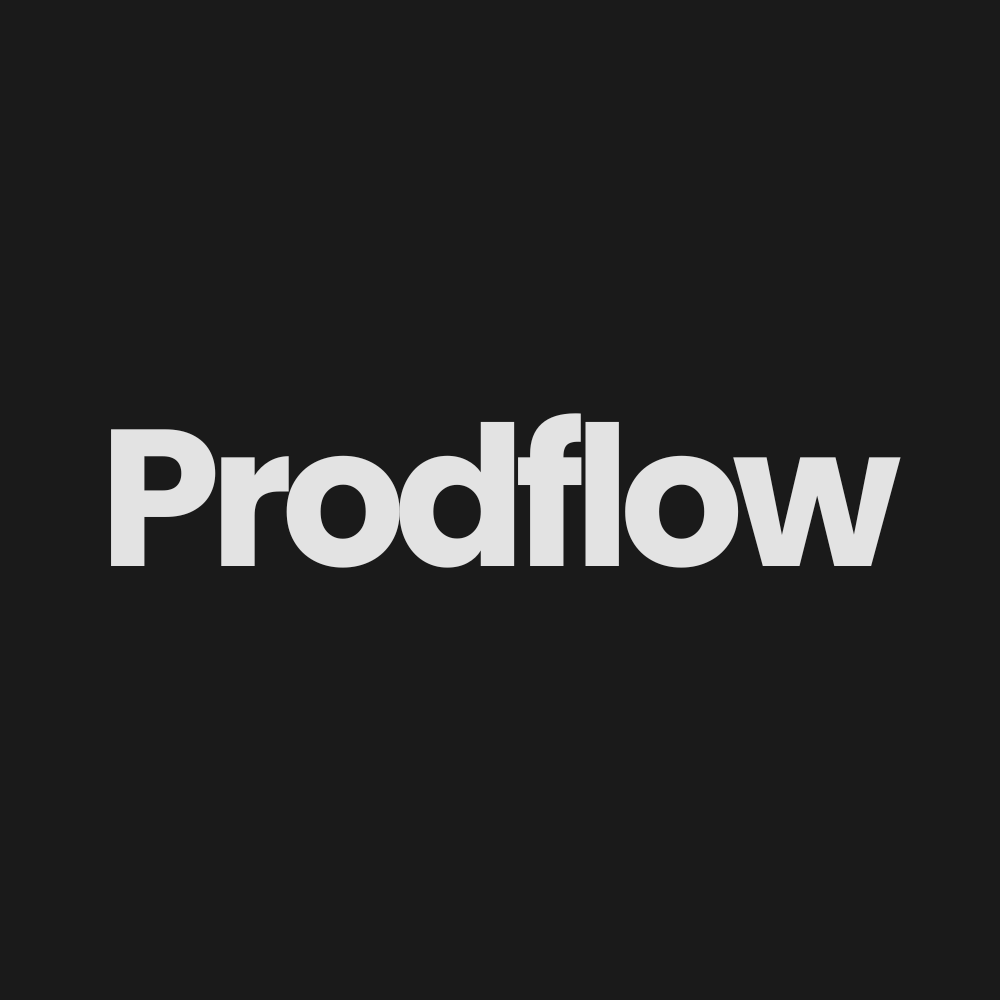
We built an AI agent that tackles the communication overhead and context switching that keeps PMs from doing valuable work. The demo automatically ingests Slack messages and Linear projects, using embeddings to intelligently match conversations to relevant projects. It then automates the manual project and issue updates that PMs currently spend hours on each week. Users can subscribe to high-level summaries of what's changed across product teams since their last update—turning information overload into digestible insights. Built with N8n, OpenRouter, and Supabase for rapid prototyping, the system is ready for teams to start using immediately with plug-and-play Slack and Linear integrations.
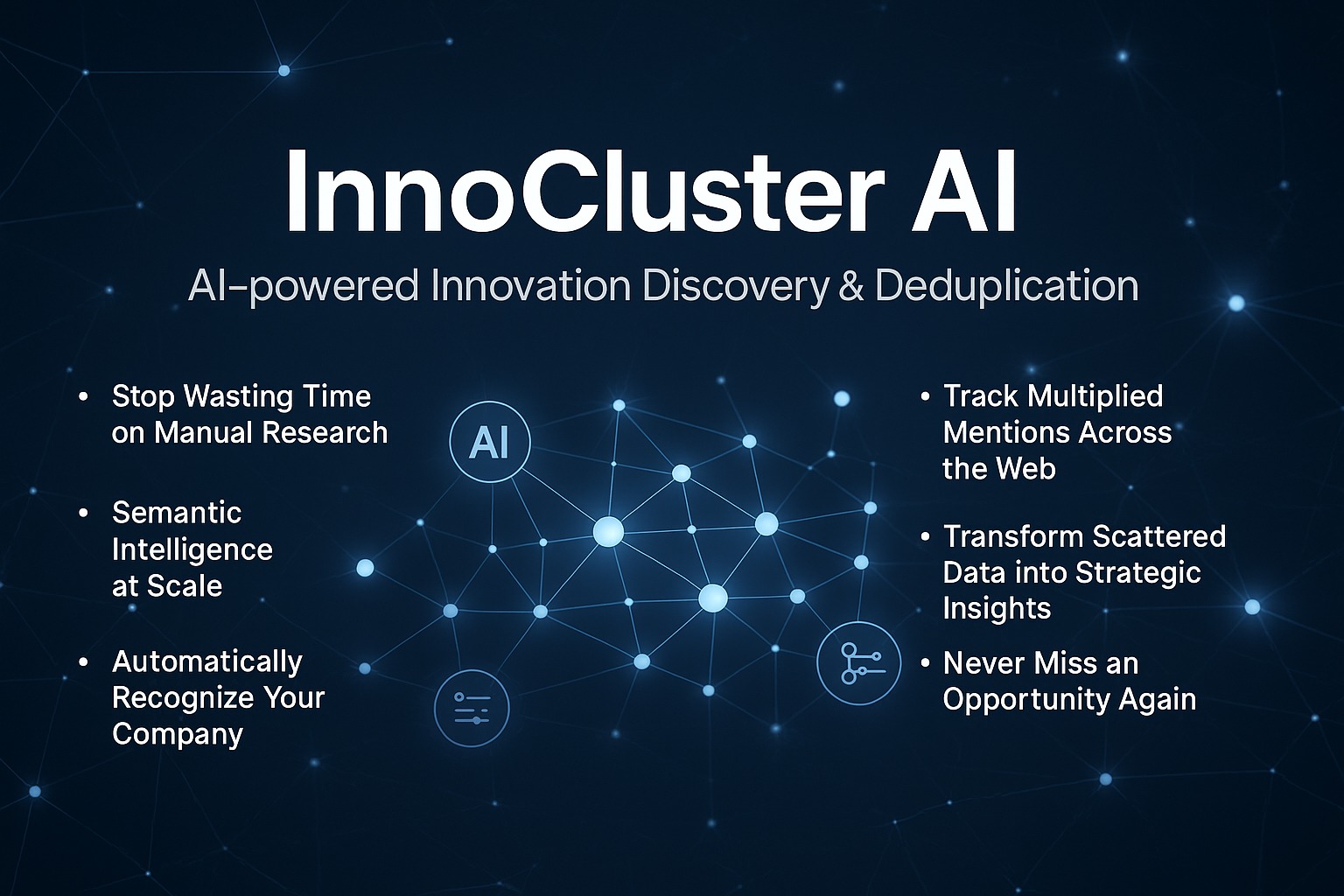
Team members: Bhabishya Gurung (me), Sakhi Hashmat Khalil, Kiran Thapalia\nOverview\nThis project addresses the challenge of identifying and aggregating duplicate innovations described by different organizations. It was developed as a hackathon submission for VTT, focusing on semantic AI and large language models (LLMs) to resolve ambiguity and unify innovation records.\n\nApproach\nData Integration: Merged structured innovation relationship data from company websites and VTT domain pages.\nFeature Extraction: For each innovation, extracted textual descriptions, full source documents, organization names, and source URLs.\nSemantic Similarity: Used AI-based semantic similarity (likely leveraging embeddings and LLMs) to detect potential duplicates by comparing innovation descriptions.\nClustering & Aggregation: Grouped similar innovations into clusters and generated unified summaries for each cluster, ensuring source and contributor information is preserved[1].\nTechnologies Used\nPython (Jupyter Notebook)\nSemantic AI (embeddings, LLMs)\nData processing with pandas
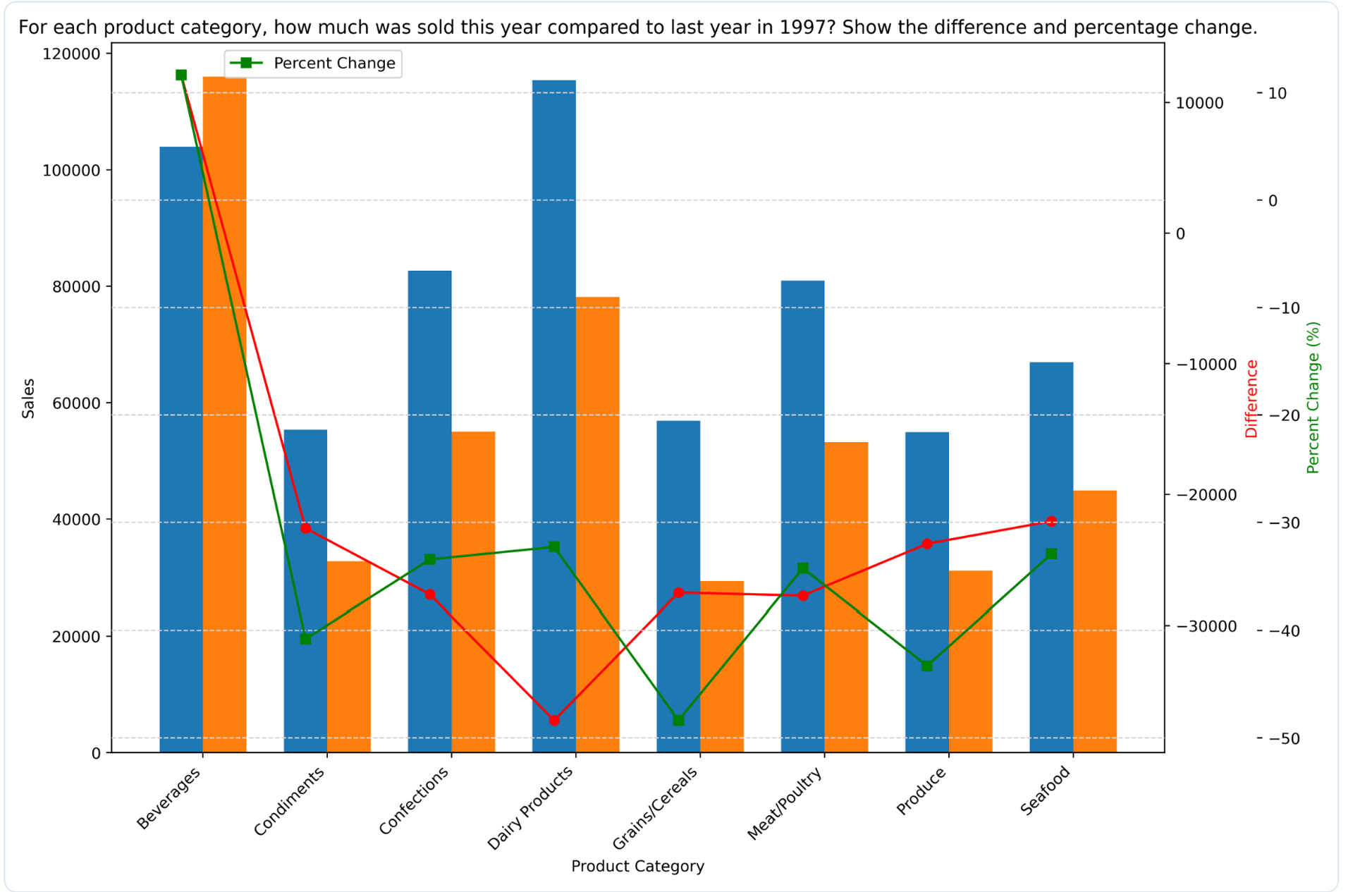
ExplainDB combines natural language processing, database querying, and data visualization in the following automated workflow:\n######################################################Generate SQL queries based on user questions***\nExecute the queries and clean the result data***\nUse the GPT-4.1 model to refine the query result and generate a natural language answer***\nAutomatically generate additional data exploration goals relevant to the user's question***\nUse LIDA to generate visualizations and explanations***\nDisplay a main chart and multiple recommended charts, each accompanied by a natural language explanation to help users understand the visualized data***\nSupport multi-turn conversations and session history to allow follow-up questions and reviews***\n######################################################\nThis platform provides an intuitive, all-in-one data exploration experience for users who may not be familiar with SQL or data visualization tools.\n######################################################\nBuilt by HackAvengers: Gong Qiao & Shivang Gupta
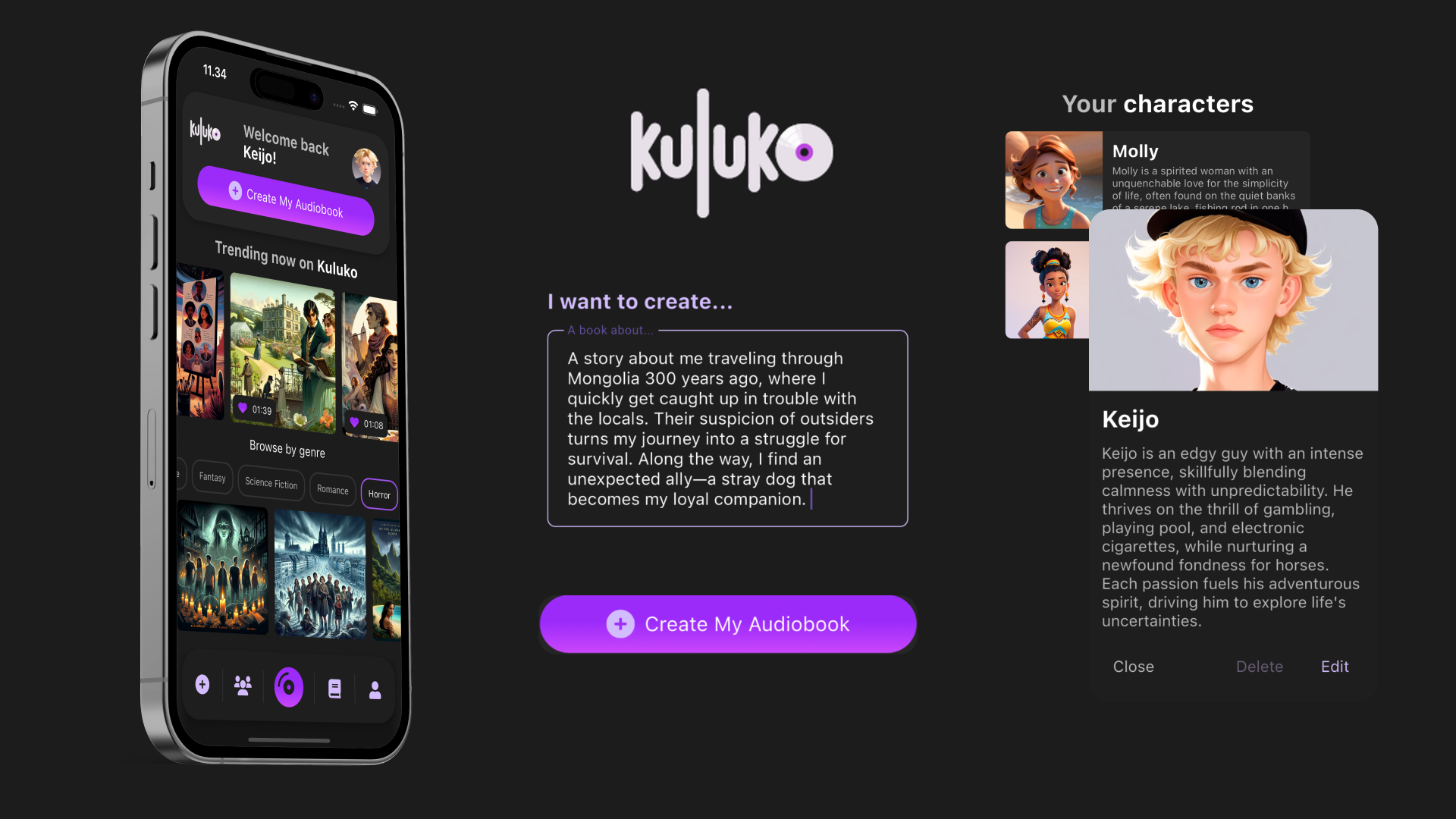
Kuluko lets users generate full, custom audiobooks, from as little as an idea for the book. We use tons of different models to write a book, turn it into audio, create covers etc.\n\nRight now we are about to launch the next major update which introduces "audio dramas", which differ from normal audiobooks by having multiple speakers, sound effects and music.\nFor this update we are focussing heavily on finetuning open source TTS models to provide payable, custom, high quality voices for the audiobooks.
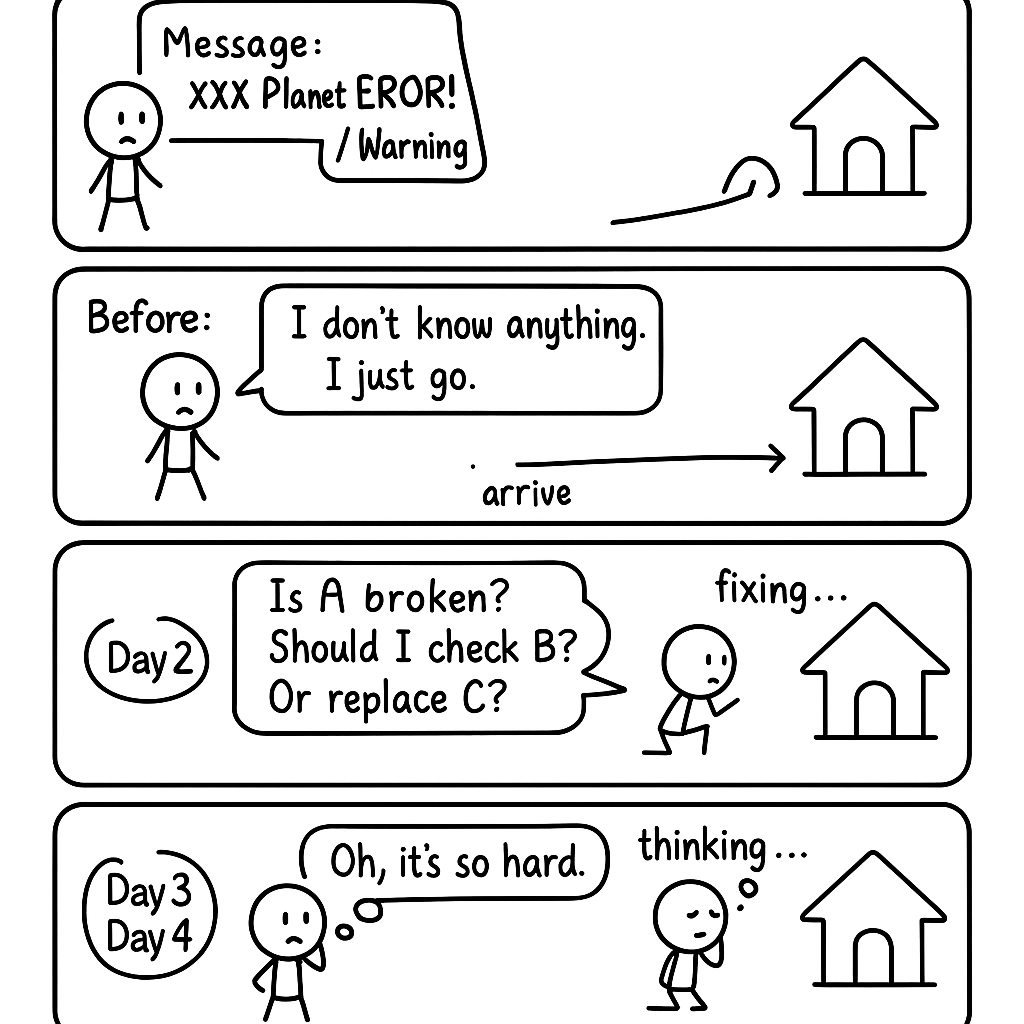
This project aims to design an AI assistant that supports electricians during the maintenance of remote electrical substations. The system is built to streamline the entire repair workflow with the following core functionalities:\n\n🔧 Before Maintenance: Intelligent Preparation\nUpon receiving a fault alert, the AI provides technicians with a comprehensive pre-maintenance briefing, including:\n\nBasic information about the substation\n\nDevice specifications and status\n\nLocal weather conditions to help plan repair schedules\n\nRequired tools and recommended replacement parts\n\n🤖 During Maintenance: Interactive AI Support\nThe electrician can ask the AI questions such as:\n\n“Is A broken?” → “Yes, based on abnormal readings in relevant indicators...”\n\n“Should I check B?” → “Yes, according to historical cases and field conditions...”\n\n“Do I need to replace C?” → “C has exceeded its expected lifespan. Replacement is recommended.”\n\nThe AI responds based on real-time data, equipment age, fault patterns, and a connected knowledge base.\n\n📄 After Maintenance: One-Click Report Generation\nAfter the task is completed, the system generates a structured maintenance log, incorporating:\n\nKey repair steps\n\nParts used\n\nAI Q&A logs\n\nEnvironmental context (e.g., weather, conditions)\n\nKey Highlights\n\n💡 Utilizes a large language model (LLM) in combination with structured databases to answer technician queries in natural language\n\n🔌 Supports integration with various databases and is designed for high portability\n\n📋 Standardizes the maintenance process and reduces errors\n\n⏱️ Helps workers prepare efficiently before deployment, saving time and increasing on-site effectiveness

Please watch the video for a quick overview.\nVideo Link: https://youtu.be/TMGar__tYC4\n\nWhat is FieldVerse\nYour extra hands and eyes on the field, add on to the human experience. FieldVerse takes the simple tools you have on you like smart watch, protective glasses, software and elevates these things to make any job faster and safer. There are three key elements.\n\nOffice Frontend: \nMore than a simple worker's hub\n-Provide detailed instructions before the job\n-Provides all needed equipment for the job and provides their location and usability status\n-Map of the venue for locating the problem easily, as well as all relevant elements like routers, power outlet and Ethernet port\n-A detailed library of the past, present and future problems and how to solve them. Their symptoms and steps.\n-AI software creates automatic notes while on the job, the worker can add his own using speech to text.\n-Guarantees that all changes to the area are recorded and noted.\n\nSmart Watch: \nAdding to its handiness\n-Makes notes of sudden movements to ensure delicate parts aren't damaged.\n-Keeps track of posture, heartrate and potential falls of the worker, ensuring their safety and well-being.\n-Using Doublepoint's gesture recognition software, the worker can pull up information and notes on his goggles if he has his hands entirely tied.\n\nXR Glasses:\nSimple protection becomes your second pair of eyes\n-Guides the field engineer with troubleshooting and repairing. \n-Films and takes pictures of the process for future recollection.\n-Collects customer service data for improvement.\n-Collects verification of each safety step being completed.\n-Keeps track of rules and regulations as well as reminds of the most common mistakes to ensure compliance.\n-Reminds of the GDPR rules while recording and collecting data\n-Shows 3D scans of the inside of routers and guides hand movement\n

Automates workflows across team members to reach higher output per team member, betters decision-making, with less repetitive tasks and more time for strategic matters.

What: This is an agent for academic researchers to help them with their routine workflows. It covers the inherent limitations of other AI Chatbot agents like ChatGPT. How: The same agentic approach as that of Cursor (IDE) is implemented for handling researchers' workflows. Planning > Executing > Updating the plan > ... Why: Research and development is the propelling engine of societies. Yet, it's one of the most underserved sectors in terms of facilitating software. That's wrong. We'll fix it.
.png)
Myla restores clarity, alignment, and confidence inside messy digital collaboration.
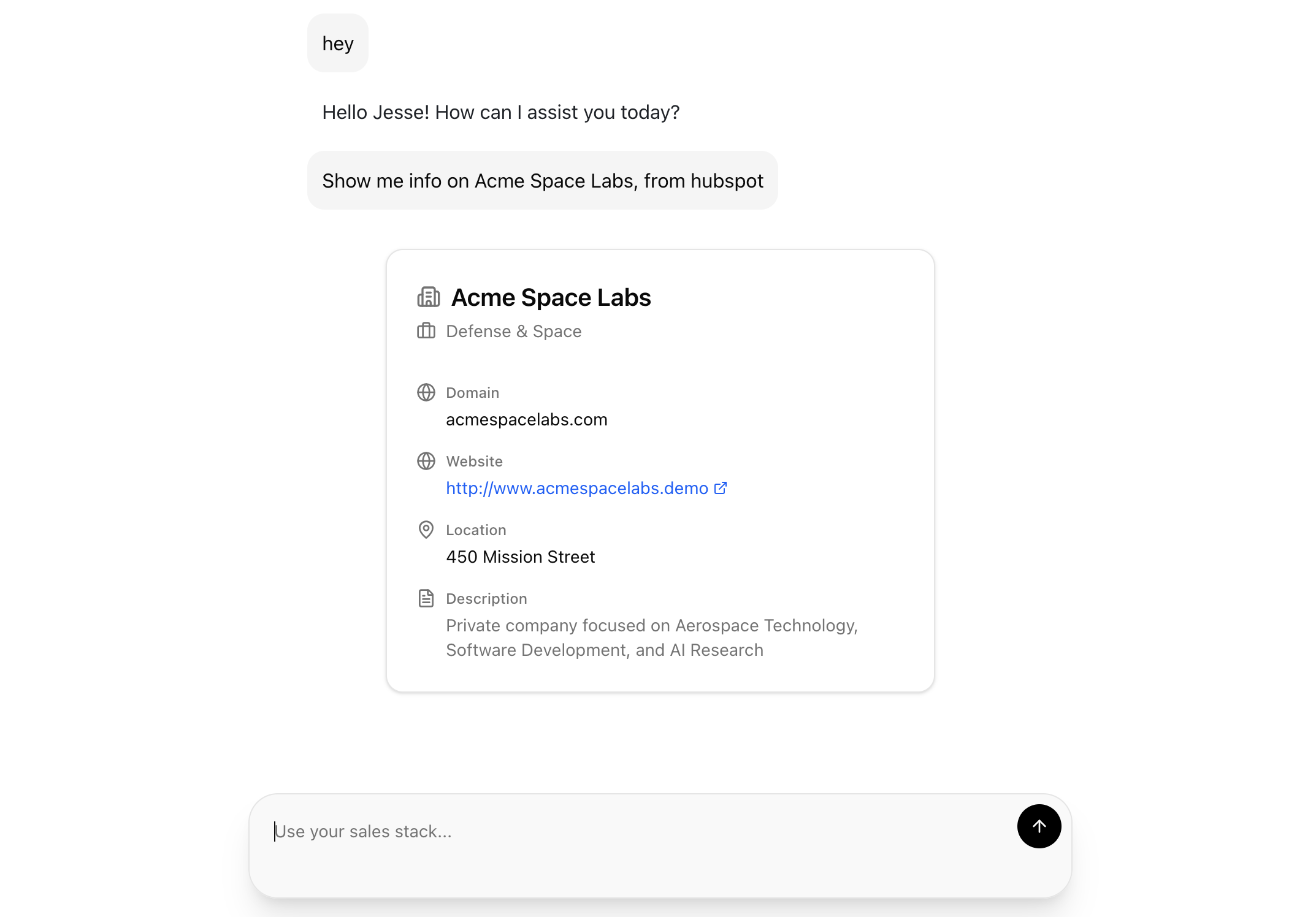
Capybara AI is a tool for using your CRM and other sales apps easily through a unified interface.
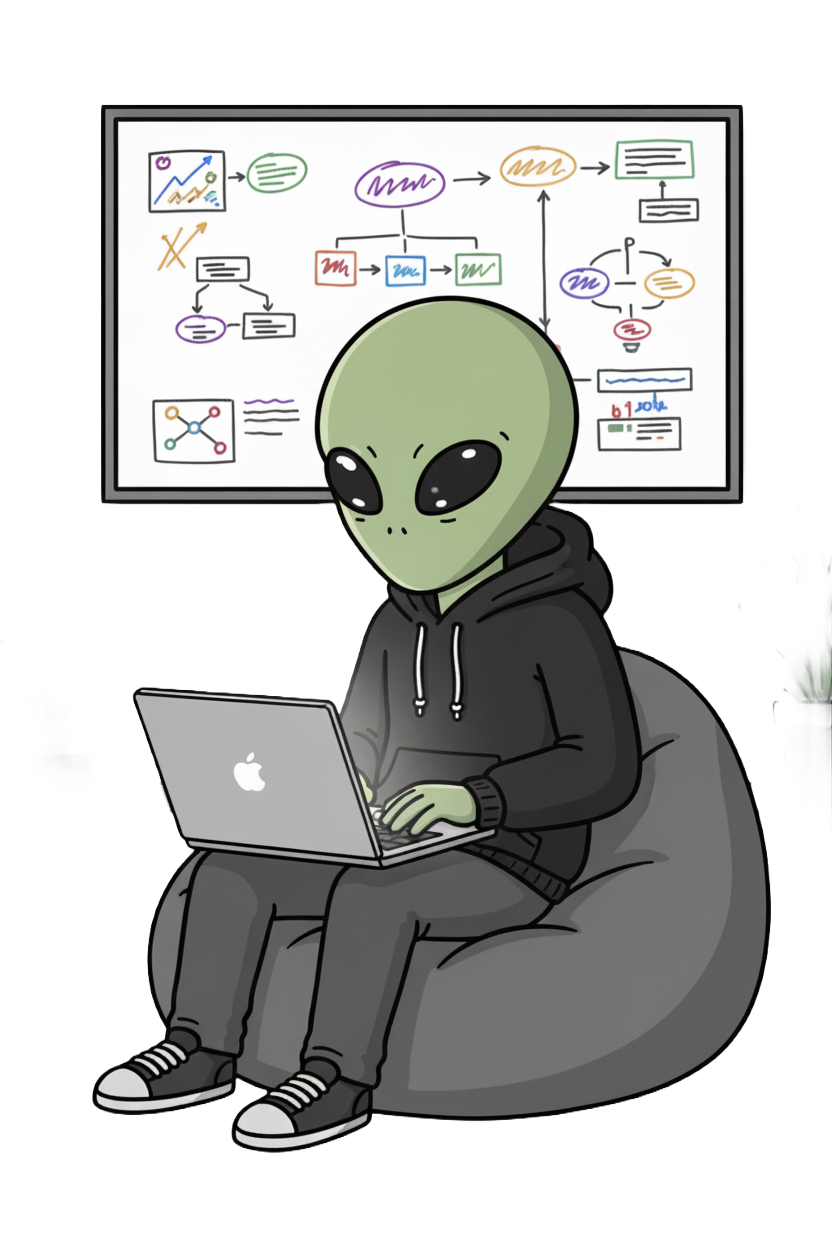
Agentic mental training, meditation, and sleep program for high performers.
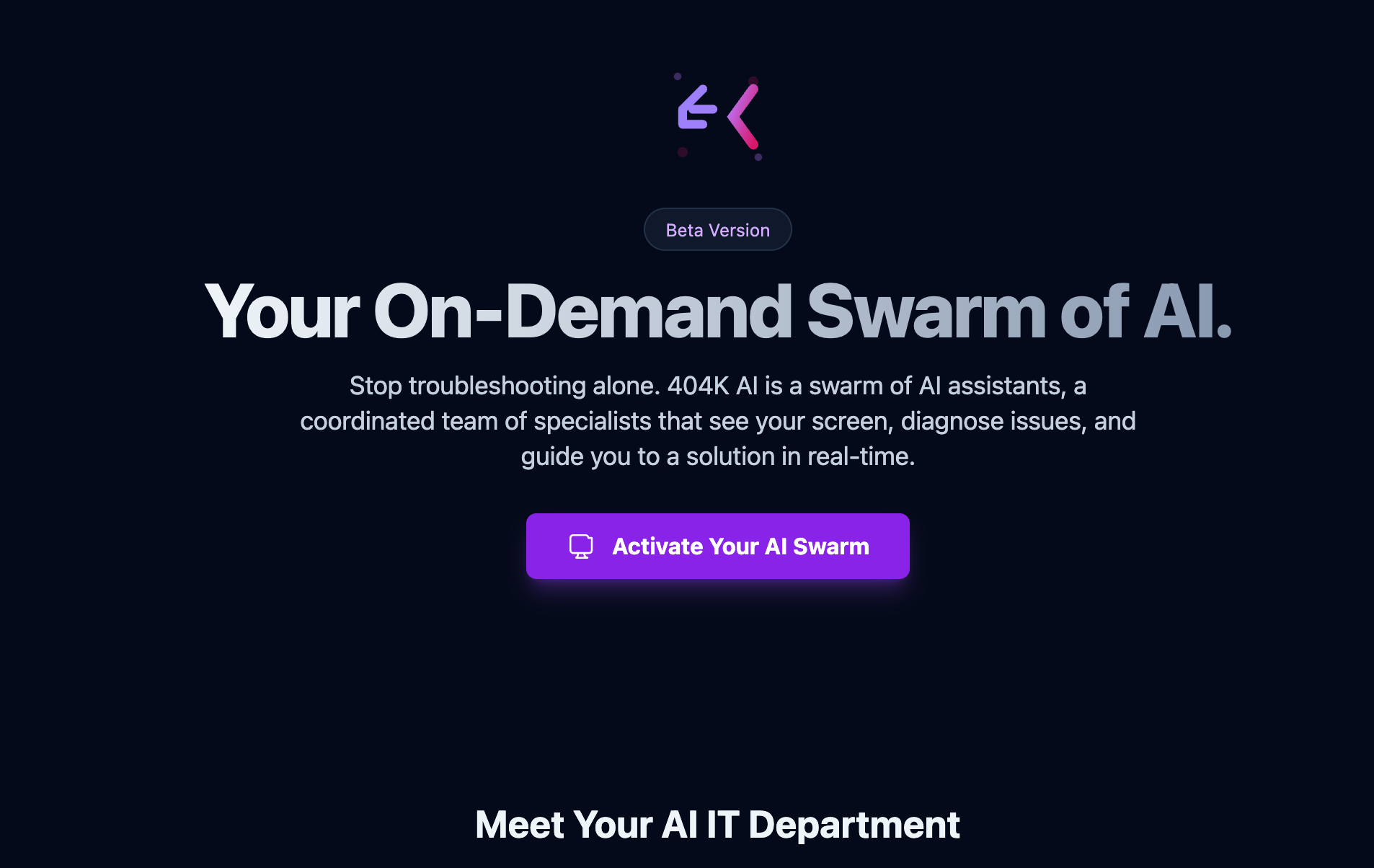
404k is an AI-powered multi-agent system that transforms traditional IT support into an autonomous, intelligent, and collaborative operation. Instead of relying on human technicians for repetitive tasks like printer errors, login failures, and software glitches, 404k introduces a coordinated team of four AI agents that communicate through a custom Neural Collaboration Protocol to solve problems in real time. Each agent has a specialized role: the Coordinator understands the issue and manages the workflow, the Vision Agent sees the user’s screen and verifies every step, the Research Agent finds accurate fixes from trusted sources, and the Report Agent generates professional documentation or escalation tickets automatically. 404k helps non-technical employees fix routine problems instantly through interactive guidance, while also supporting IT teams in diagnosing complex issues or responding to emergencies such as server failures and cyberattacks. Fully GDPR-compliant, 404k processes everything locally — with no data stored or recorded. With the IT support market valued at $53 billion in 2025, growing to $83 billion by 2027, 404k offers a scalable, cost-efficient, and privacy-safe solution that can autonomously resolve over 60% of tickets, cut response times in half, and provide 24/7 intelligent support to organizations worldwide. 404k – AI Agents. Zero Downtime. Infinite Support. you can try it now https://service-404k-ai-887927169011.us-west1.run.app/
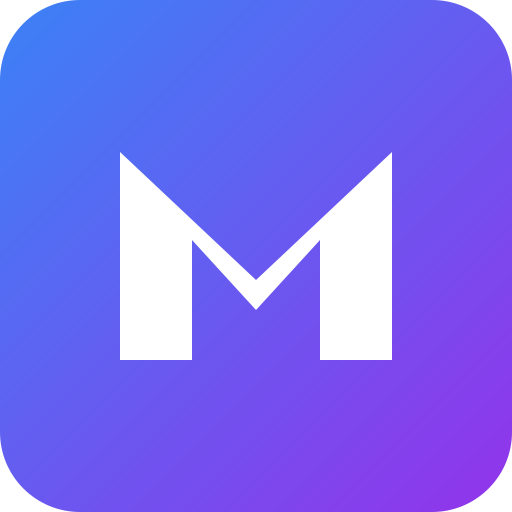
No-code SAAS platform that empowers one marketer to identify campaign leads from CRM, calculate personalized prices, and send professional proposals to thousands of potential customers. Turn your hidden CRM data into high-conversion contract proposals. https://massify.vercel.app/
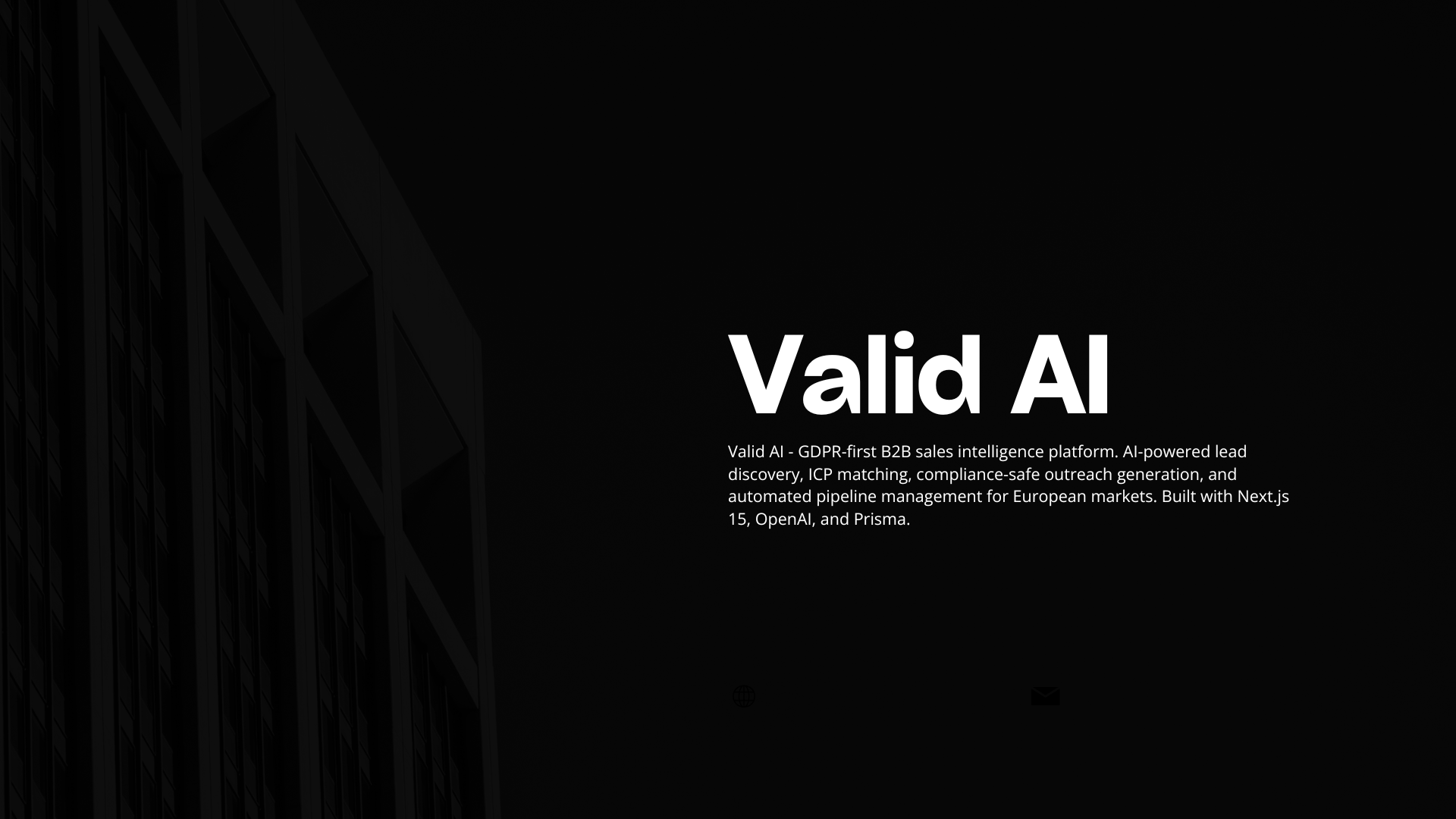
Valid AI - GDPR-first B2B sales intelligence platform. AI-powered lead discovery, ICP matching, compliance-safe outreach generation, and automated pipeline management for European markets. Built with Next.js 15, OpenAI, and Prisma.

Agentic AI nurse for communication with the elderly, being able to read between the lines and differentiate between simple small talk and detecting symptoms for diseases and making nursery homes and hospitals workers' lives easier by helping with automatic appointment scheduling using proactive reminders. A friend for the caregivers and those cared for alike!

What if AppSec would be as easy as "tab complete"

This is an Estonian-speaking AI Voice Agent for the Service Sectore developed during the Agentic Era Hackathon

AI-Powered Recruitment Verification Platform The Problem Bad hires cost U.S. companies $300 billion annually. A single senior-level mis-hire costs 6-24 months of salary in wasted compensation, lost productivity, and rehiring expenses. The crisis has intensified: job listings now receive thousands of AI-generated applications with fabricated credentials, inflated titles, and fake experience. Traditional background checks happen after hiring decisions—too late. We verify candidates before interviews, catching fraud early. The Solution An AI agent platform that automates comprehensive candidate verification between AI screening and first interviews. When candidates pass initial screening, they upload documents (CV, diplomas, pay stubs, portfolios) and grant permission for our AI to contact previous employers, managers, and colleagues. Autonomous AI Agents (Working in Parallel) Employment Verification Agent: Contacts HR at previous employers via phone/email/fax to verify dates, titles, salary, rehire eligibility. Reference Interview Agent: Conducts structured interviews with former managers and colleagues, asking behavioral questions about performance, responsibilities, and why they left. Education Verification Agent: Confirms degrees with university registrars, verifies certifications with issuing bodies, flags diploma mills. Technical Validation Agent: Analyzes GitHub (commits, code quality, contributions), reviews portfolios, validates claimed skills against actual work. Digital Footprint Agent: Cross-references LinkedIn, professional sites, publications; checks timeline consistency and employment gaps. Financial Records Agent: Validates pay stubs against claimed salary, checks W-2/1099 consistency. All interactions are recorded and archived for compliance. Real-Time Fraud Detection System immediately alerts on major red flags: Unverified degrees ("Stanford has no record of this person") Empty GitHub despite claiming "5 years Python experience" Title inflation ("Junior Analyst" claiming "Senior Director") Termination for cause disguised as voluntary departure Doctored pay stubs The Output Companies receive a comprehensive report in 3-5 days directly in their ATS: Risk Score: 🟢 Green (verified, strong) / 🟡 Yellow (verified, concerns) / 🔴 Red (fraud/major flags) Narrative Summary: "At TechCorp (2020-2022), verified as Senior Developer by HR. Former tech lead John Smith: 'Led payment infrastructure rebuild, strong Python skills, excellent collaborator but sometimes missed deadlines under pressure.' At StartupY (2018-2020), verified as Developer II—note: resume claims 'Senior' (title inflation). Manager Sarah Chen: 'Fast learner, promoted after 18 months, solid technical skills.'" Technical Validation: "GitHub shows 547 commits in claimed stack (Python, React), code quality 7/10, timeline matches employment. Claims validated." Red Flags: Title inflation detected, 8-month unexplained gap, unverified AWS certification, salary discrepancy ($140K claimed vs. $118K verified base) Custom Interview Questions: "Your tech lead mentioned deadline challenges—how do you prioritize competing urgent tasks?" / "Walk through the payment infrastructure project architecture" / "What were you doing during the 8-month gap?" Seamless Integration Plug-and-play—no migration required. One-time 5-minute setup: Connect via OAuth to existing ATS (Greenhouse, Lever, Workday, BambooHR, etc.) Add "Verification" stage between "AI Screen" and "First Interview" Enable auto-trigger or manual mode Automatic workflow: When recruiter moves candidate to verification stage, our API pulls data, emails candidate, processes verification, syncs results back. Report appears directly in candidate profile with risk badge, PDF attachment, tags, and interview questions. Pre-built connectors for Greenhouse, Lever, Workday, Ashby, iCIMS, Jobvite. Chrome extension available for platforms without APIs. Smart features: Auto-trigger verification after AI screening, bulk processing (50+ candidates overnight), Slack/email alerts for red flags, mobile-optimized reports. Business Model Pricing: $75-100 per verification ($50 for 100+/month volume). No subscriptions, pure pay-per-use. Target: Tech companies, finance, healthcare, high-volume hiring operations where bad hires are expensive. ROI: Preventing one bad senior hire ($150K+ cost) pays for 1,500-2,000 verifications. Why It Works Catches fraud before interviews, eliminating wasted recruiting time. AI agents work 24/7 at lower cost than human investigators with consistent results. Integrates seamlessly into existing workflows—companies just get better-vetted candidates showing up to interviews.

Hiring is broken. Talent wastes 100+ hours writing cover letters. Recruiters drown in 1,000s of useless CVs. Their keyword filters are garbage. The whole process is slow, biased, and wastes everyone's time. Today's AI "solutions" just accelerate the broken parts. They're lipstick on a pig. We're replacing the entire manual pipeline. Our platform uses autonomous agents. A Talent Agent represents the candidate—real skills, real preferences. A Role Agent represents the job—the actual requirements. The agents "date" and negotiate fit. They run technical interviews, agent-to-agent. We automate 100% of the pre-interview funnel. The impact is obvious. Talent gets 10x the interviews for zero work. It's free. Recruiters get 10x faster hires, instantly. We offload their entire acquisition pipeline. The model is frictionless. Free for talent, always. Companies pay a small success fee. 5-15% of one month's salary. It's cheaper than their current spend. The market is massive. We start with the Finnish internship segment, building FOMO by onboarding all top students. Europe is 150x Finland. Then we take all of recruiting. We're not building another SaaS tool. We are building the new protocol for the labor market. High-signal, zero friction. Humans only show up for the final conversation.

Spotlight automates the search of the next location for your business.